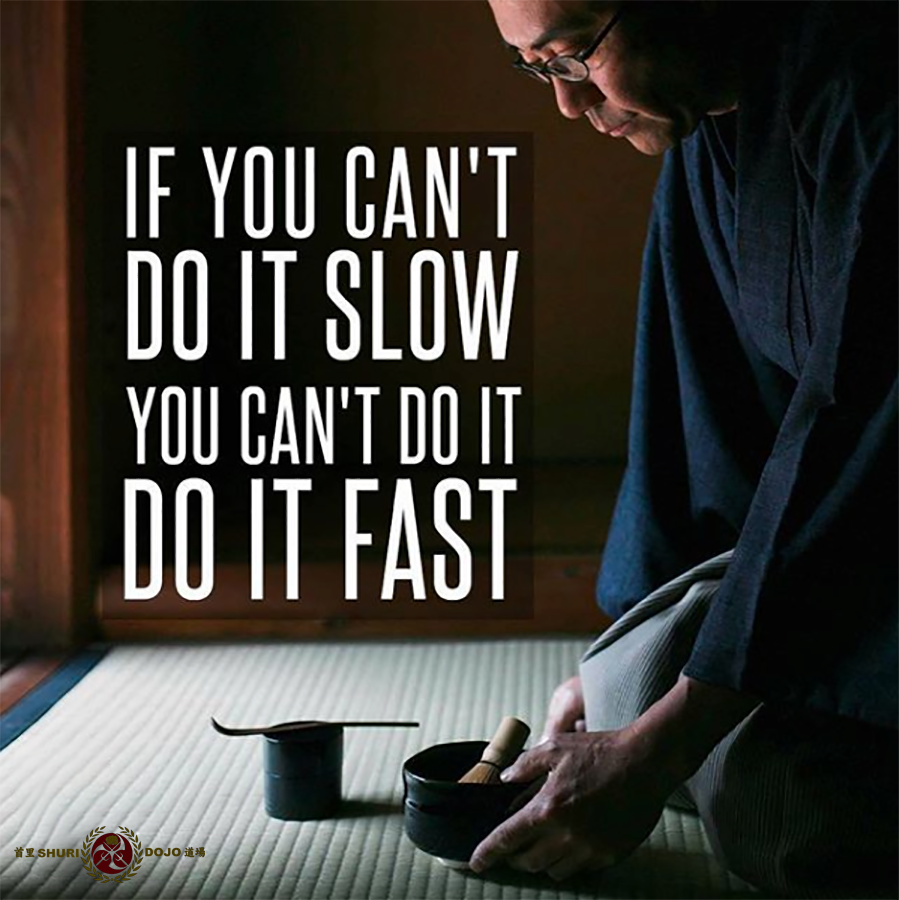
“If you can’t do it slow, you can’t do it fast.”
.
My sensei would often make us practice our techniques in super slow motion to ensure we were using proper form and really developing an understanding of the nuances of each movement.
.
Of course, it took me a while to understand why we were doing this. At first, I thought it was a waste of time. But then I realized how much more difficult it was to punch or kick in slow motion. It required a much deeper understanding of what each movement actually required. Slowly (no pun intended), I came to understand where I had missed the boat all these years.
.
The point is not whether the punch or kick hits the target (that comes later), but whether you do everything correctly along the way. Meaning, are you keeping your key muscles relaxed? Are you moving all of your muscles in the most effective way? Are you maximizing accuracy and efficiency? Are you nailing every single tiny little detail?
.
One of the keys to success (and building confidence as well), is super slow practice. A process of practicing in slow motion – while being fully mindful, highly engaged, and thinking deeply in real-time about what you are doing.
.
Sometimes we are too concerned with the outcome, and not the process. Meaning, we forget that how we get there is just as important as whether or not we do.
.
The point of slow practice is not just to slow things down in order to execute the technique perfectly. It’s about fine-tuning the execution, and looking for additional ways to make it even better, while we are practicing slowly enough to monitor and think about the little details.
.
Are you cultivating the right habits? Or are there lots of inefficiencies, or bad habits that will lead to breakdowns when you increase the tempo?
.
Since the whole point is to be able to think, monitor, and analyze our technique, practicing at a moderate tempo defeats the purpose. It’s too fast for us to observe, fully process, and tweak all the little details.
.
The idea is to utilize super slow practice so that we can pay attention to all the subtle nuances of our mechanics, increase our awareness of what is actually happening, and find ways to make things better.
.
“Never cover a lack of skill with an excess of speed.” ??
.
.
With thanks to Noa Kageyama
.
.
